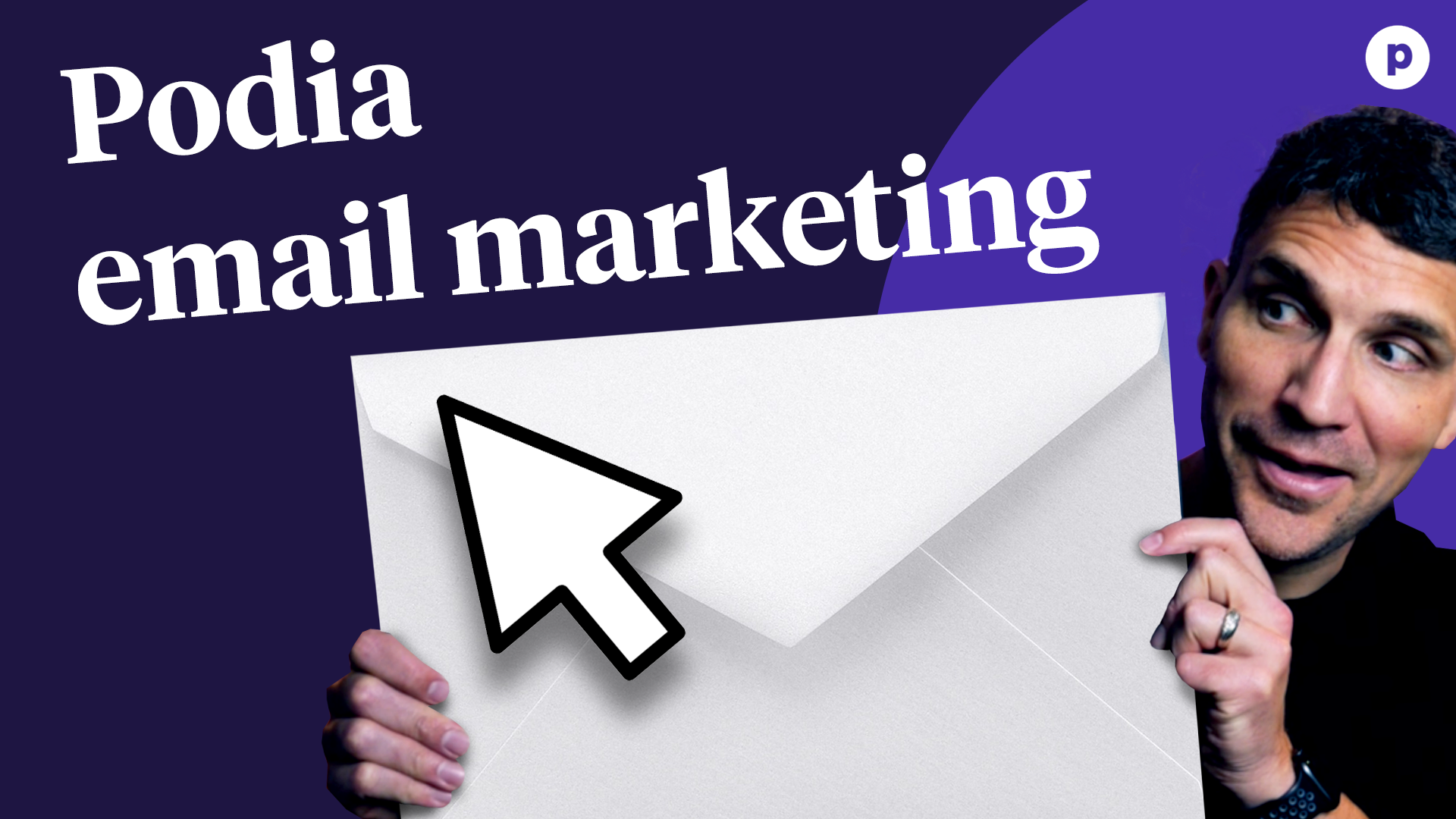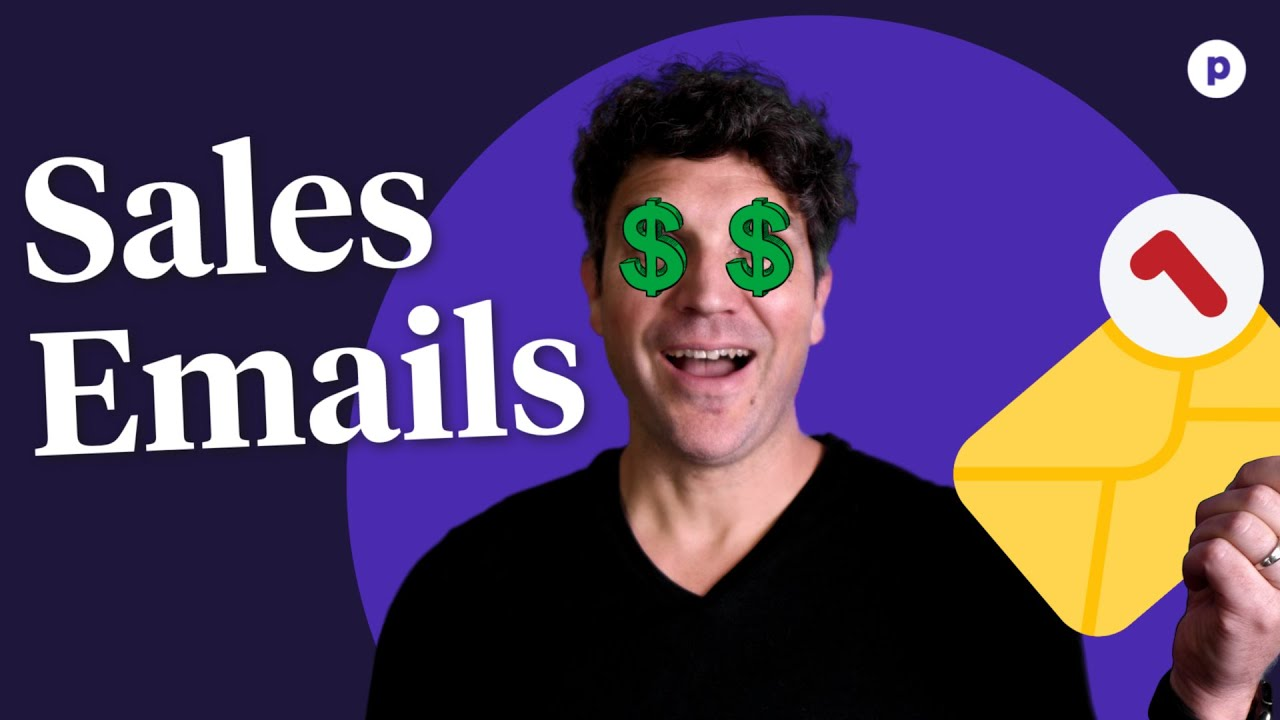How to build an engaged email list (That will actually get sales)
Transcript
An email list can be a powerful sales-boosting tool when you’re ready to launch your first product. But how powerful depends, not just on the size of your list, but how engaged and primed to buy your subscribers are. In this video, we’ll walk you through how to get engaged subscribers that will be eager to buy once you launch your first product. Let’s get into it.
Welcome to “First sale to full scale,” a 10-video series that covers the journey from making your first digital product to running a full-scale online business. If you’re thinking about making your first product, this video is a great starting point.
Ahead, we’re going to cover how to get subscribers to sign up for your newsletter, how to keep them engaged, and how to get them excited to buy your product.
First, let’s talk about getting people to sign up.
Email is still one of the most exclusive and intimate places you can communicate with someone online. That’s why most people don’t just give away access to their inbox. If you want to earn people’s trust and convince them to subscribe, check out these five tips.
Think of your email list as a product
This is foundational to having an email list. Even if you’re not selling access to your newsletter, your subscriber is making an exchange; access to their inbox for whatever value they might get by signing up.
When you think of your email list as a product, it’s easier to consider the transaction from your subscribers’ perspective and answer questions like who is my newsletter for and why would someone want to sign up?
Share your email list
In order for someone to sign up for your email list, they have to know it exists in the first place. Don’t be shy about letting people know and make it easy for them to sign up.
Some great places to share are on the homepage of your website, alongside helpful articles, and at the end of valuable social media posts. Position subscribing to your email list as the next logical step for people who follow your content.
Set clear expectations
While surprises can be fun, it’s best to give potential subscribers a good idea of what to expect when they sign up for your newsletter. Be sure to answer these four questions:
Who is your newsletter for?
What will subscribers get?
When will they get it?
How often will they get it?
Doing this removes any ambiguity and makes it easier for the right person to want to sign up.
Offer exclusive or early access to content
If you already create content, you can offer early access to that content as an incentive for signing up for your newsletter. You can also create exclusive content just for your newsletter subscribers, and you don’t necessarily have to start from scratch. You could use an old article as a script for a video that you attach in your newsletter. Or you could transcribe a podcast episode and share the highlights.
If you get creative, you can give your subscribers an exclusive experience without having to do a bunch of extra work.
Create a lead magnet
By far, one of the best ways to attract new subscribers is to solve a problem for them with a digital product. It doesn’t have to be a huge problem or a big product. It could be a checklist, pdf guide, short ebook, or mini-course.
With Podia, you can set up an automation so that as soon as someone signs up, the lead magnet is waiting for them in their inbox.
There are lots of different ways to build an email list, but hopefully using these five tips will get you the results you’re looking for.
Next, let’s talk about how to keep your subscribers engaged.
Getting people signed up for your newsletter is only half the battle. Actually, it’s probably less than half. Because even if you have a ton of subscribers, you’re going to have difficulty selling to them if you haven’t kept them engaged.
When we use the word engaged, we’re looking for people who open, click, reply, and even share. To get subscribers to do that, follow these five strategies.
Send your first regular email within the first week
While you should send your lead magnet right away, it’s important that your new subscriber receives your regular newsletter soon after signing up. It’s close enough to when they originally signed up that they still remember what they were thinking and feeling that led them to subscribe. Sending your newsletter within the first week signals to them that they are now “in” and that you will follow through on your commitment.
That actually leads us to the next tip.
Follow through and be consistent with your newsletter
If you tell subscribers that you send a weekly newsletter every Thursday morning, it’s going to be a lot easier to keep people engaged if you stick to that. People like predictability, and knowing what to expect makes it easier for people to feel prepared to respond or share.
Give special attention to your subject line
Great subject lines are like well-designed book covers. If I like the cover design, I’m going to check out what’s on the pages. Many creators treat the subject line like an afterthought, but it could make all the difference when it comes to people actually seeing what you have to share. Follow these helpful guidelines for effective subject lines:
Use a tone that matches your audience relationship
Avoid overused phrases or techniques as they may be ignored
Use words that work for search and filtering
Use the 5 “W”s and 1 “H”. Where, what, why, when, who, and how
Try to limit your subject line to between 50–65 characters
Check out this video for a more in-depth look at writing great email subject lines.
Deliver on the promise of your newsletter
Earlier, we talked about thinking of your newsletter like a product. If someone has given you access to their inbox in exchange for the promise of valuable newsletter content, make sure to honor that transaction.
Encourage dialogue
You don’t necessarily have to do this in every email, but asking questions and encouraging responses can get you a lot of valuable information about your audience. People won’t often reply unless they’re asked, so make sure to ask a single question and let them know you value their response.
If someone does respond, make sure to reply and keep the conversation going if you can. This is a fantastic way to learn more about your audience’s specific problems and possibly discover a product you could sell as a solution.
Finally, let’s get your subscribers excited to buy your product.
The right strategies can easily turn an engaged audience into an audience that’s excited to hit the buy button. Check out these three tips for priming your subscribers to buy:
Let your subscribers be the first to know
Even before you’ve started making your product, let them know you’re building something for them. If you’re excited and eager to share it with them, they’ll share your enthusiasm and want to be kept in the loop. You could even let them know that there might be discounts for pre-orders or an exclusive beta version.
Share your process from the very beginning
Let them see behind the curtain as you’re building your product. This not only keeps them mindful that you’ll soon have a product to sell but also allows them to offer valuable feedback along the way which you could use to make the finished version even better.
Ask for feedback
But don’t just rely on people offering unsolicited feedback. Make a point to ask for specific feedback about the product you’re building. Maybe you’re thinking about making a video course. You could ask if you should just do slides, or if they’d prefer to see your face on the screen. You could ask if they’d like some kind of online quiz or a worksheet they could print at home.
When people are able to provide feedback on a product in development, it boosts their confidence that it will be an effective solution for them.
Hopefully, now you feel like you’ve got some good strategies for building your email list, keeping subscribers engaged, and getting them primed to buy.
In the next video, we’ll talk about how to determine what your first digital product should be. If you have any questions about the info we covered in this video, don’t hesitate to leave a comment below.
If you found this video helpful and you want more content like this, click the subscribe button and hit the notification bell so you’ll be sure not to miss any future videos. Thanks for watching, and I’ll see you next time.


